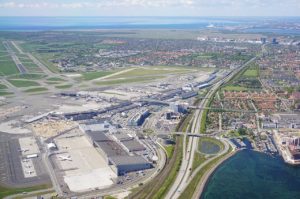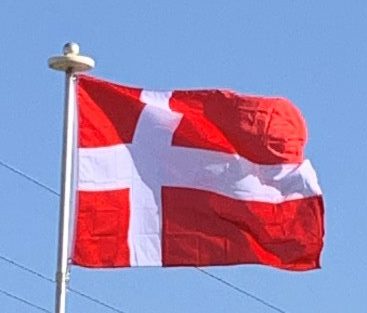Denmark’s currency, the krone (DKK), is pegged at approximately 7.46 kroner per euro through the ERM II. Although a September 2000 referendum rejected adopting the euro, the country follows the policies set forth in the Economic and Monetary Union of the European Union (EMU) and meets the economic convergence criteria needed to adopt the euro. The majority of the political parties in the Folketing support joining the EMU, but since 2010 opinion polls have consistently shown a clear majority against adopting the euro. In May 2018, 29% of respondents from Denmark in a Eurobarometer opinion poll stated that they were in favour of the EMU and the euro, whereas 65% were against it.

Ranked by turnover in Denmark, the largest Danish companies are: A.P. Møller-Mærsk (international shipping), Novo Nordisk (pharmaceuticals), ISS A/S (facility services), Vestas (wind turbines), Arla Foods (dairy), DSV (transport), Carlsberg Group (beer), Salling Group (retail), Ørsted A/S (power), Danske Bank.
Transportation:
Significant investment has been made in building road and rail links between regions in Denmark, most notably the Great Belt Fixed Link, which connects Zealand and Funen. It is now possible to drive from Frederikshavn in northern Jutland to Copenhagen on eastern Zealand without leaving the motorway. The main railway operator is DSB for passenger services and DB Schenker Rail for freight trains. The railway tracks are maintained by Banedanmark. The North Sea and the Baltic Sea are intertwined by various, international ferry links. Construction of the Fehmarn Belt Fixed Link, connecting Denmark and Germany with a second link, started in 2015. Copenhagen has a rapid transit system, the Copenhagen Metro, and an extensive electrified suburban railway network, the S-train. In the four largest cities – Copenhagen, Aarhus, Odense, Aalborg – light rail systems are planned to be in operation around 2020.

Cycling in Denmark is a very common form of transport, particularly for the young and for city dwellers. With a network of bicycle routes extending more than 12,000 km and an estimated 7,000 km of segregated dedicated bicycle paths and lanes, Denmark has a solid bicycle infrastructure.
Private vehicles are increasingly used as a means of transport. Because of the high registration tax (150%), VAT (25%), and one of the world’s highest income tax rates, new cars are very expensive. The purpose of the tax is to discourage car ownership. In 2007, an attempt was made by the government to favour environmentally friendly cars by slightly reducing taxes on high mileage vehicles. However, this has had little effect, and in 2008 Denmark experienced an increase in the import of fuel inefficient old cars, as the cost for older cars—including taxes—keeps them within the budget of many Danes. As of 2011, the average car age is 9.2 years.
With Norway and Sweden, Denmark is part of the Scandinavian Airlines flag carrier. Copenhagen Airport is Scandinavia’s busiest passenger airport, handling over 25 million passengers in 2014.

